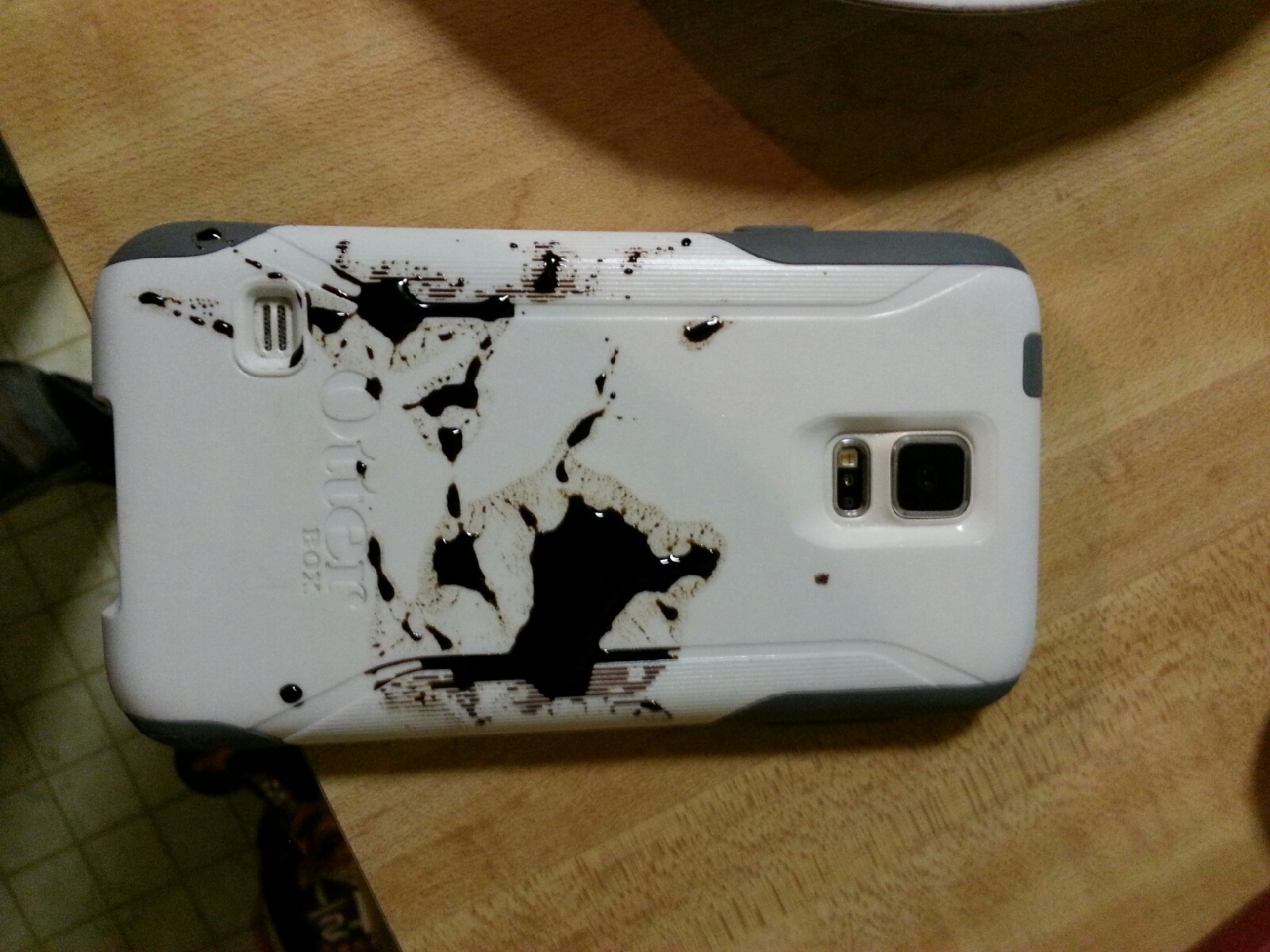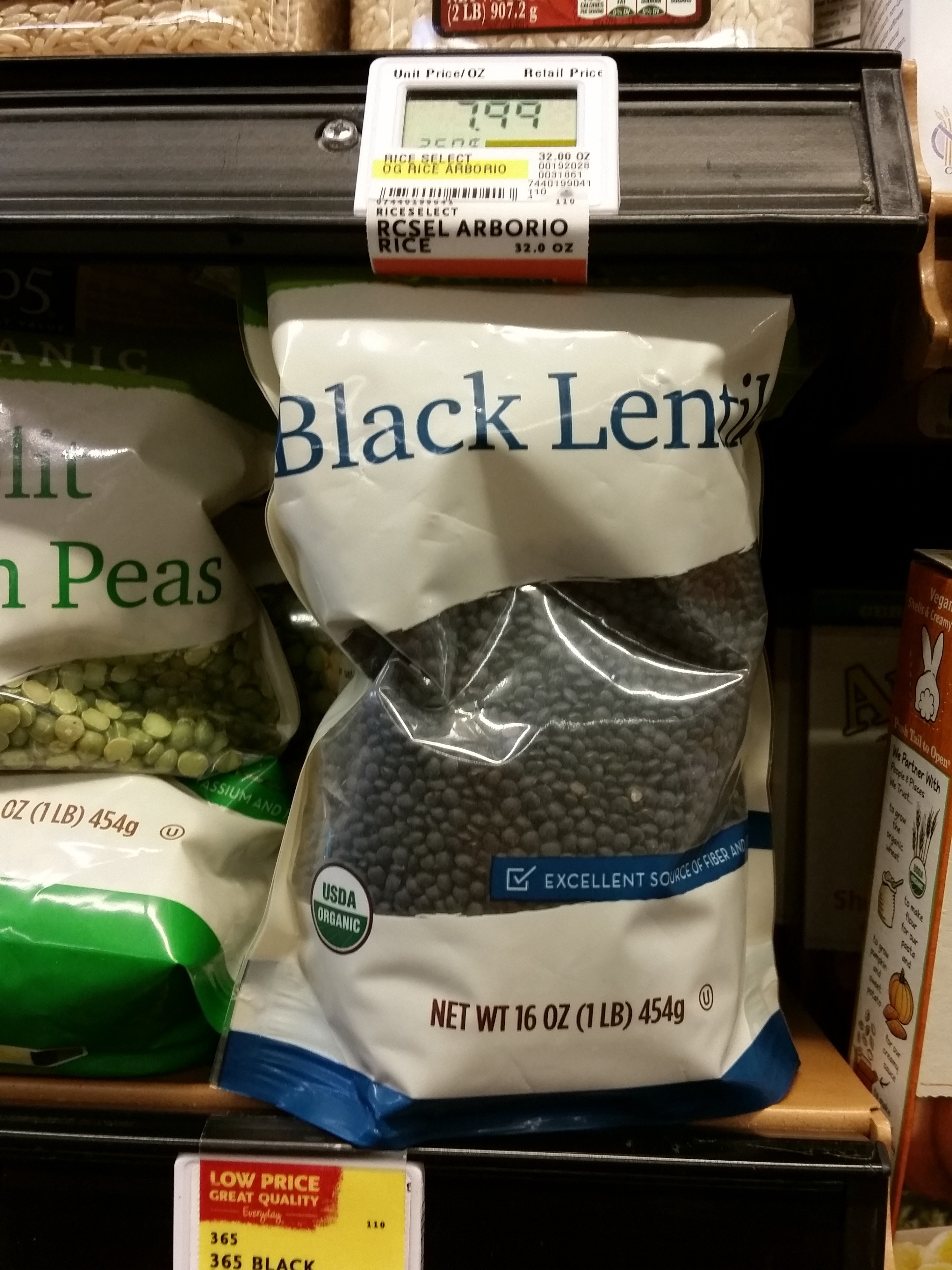Stained, poured, spattered, seeped, imprinted, feathered, and the oh-so-famous: dripped. Artworks in the DMA’s Jackson Pollock: Blind Spots radiate action verbs that describe both how Pollock made his art and how the art continued to transform once the paint/ink hit the canvas/paper. Spending the last few months surrounded by these works and their many verbs, I decided to take some of Pollock’s verbs into my kitchen to see where inspiration took me. And in a very big stroke of luck, I heard about and tracked down a local Dallas chef who had done the same thing!
First task on my adventure: source black “paint.” While I’m big on “eating my colors,” brainstorming black foods turned out to be tricky (how many can you name without Google?!). Trips to a few grocery stores provided some diverse and exotic options:
- black lentils
Second task: put black “paint” to “canvas.” Black paint absorbed into Pollock’s unprimed canvas leaving halos and burred edges around the solid poured lines in works like Number 26, 1951, shown in detail below. Fresh mozzarella turned out to be a perfect responsive canvas, and a thick, syrup-y reduction of balsamic vinegar and a little black strap molasses became the black(-ish) paint that stained and soaked into the cheese in big thick dollops. This also turned out to be a pretty tasty painting.
And much like Pollock, I got really into it, and had a bit of collateral damage as I worked…

Next, taking inspiration from Pollock’s works on paper, I rounded up some thin paper-like phyllo dough, which I left layered in sheets, and painted with a sweet coffee and black fig sauce. The sauce stained and puckered the phyllo, much like Pollock’s ink stained Japanese paper. I didn’t actually eat this one as it’s shown, but the sauce tasted good on ice cream!
And now, saving the best for last….While I had lots of fun playing around in the kitchen, going for more of a visual approximation than a dish you would whip up for dinner, I was excited to see how someone who cooks for a living would use Pollock’s art as inspiration. My chef friend Charlotte connected me with local chef Jordan Criss, of Deep Ellum’s Twenty-Seven, who had come to the Museum to see the exhibition and walked away with some great ideas (thank you, Charlotte!).
Below is Chef Criss’s West Bank Pho, a creation made from crispy fried garlic, cilantro, tasso ham, Sriracha, and Hoisin sauce, and beneath the tastiness, his inspiration for plating the dish:

West Bank pho
The show inspired my dish by shattering my idea of contrived plating. All Of Pollock’s work is a kind of calming chaos that isn’t taught and rarely seen in culinary arts. His work pushed the limits and I feel it’s hard not to want to do the same after walking through his exhibition.
Has an artwork or exhibition ever inspired you to head into the kitchen to play with (or plate) your food? Share in our comments, and then, check out our Education staff’s collection-inspired cookies, including a masterfully Pollock-ed cookie!
Amy Copeland
Manager of Go van Gogh and Community Teaching Programs
